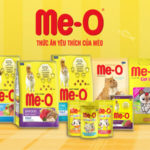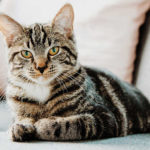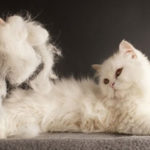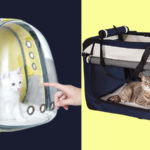More and more people are choosing to keep cats as pets and take care of them. Cat care requires dedication and knowledge about these animals to make the process easier.
1 What do cats eat?

To ensure your cat’s good health, you need to provide them with a regular source of animal protein as they are carnivores. Cats cannot develop healthily on a vegetarian diet, as this will reduce their nutritional intake and lead to a weaker immune system.
Look for high-quality food that is suitable for your cat’s health and age.
You can enhance your cat’s nutrition by providing them with cooked or raw meat. Fish is a favorite among cats, but it should not be fed too often as it can lead to a vitamin E deficiency.
2 How much food does your cat need?
 The amount of food your cat needs depends on their age and weight.
The amount of food your cat needs depends on their age and weight.
The amount of food you feed your cat will vary based on their age, size, and weight. Therefore, do not apply the same diet to different cats, as this can lead to obesity and reduce their lifespan.
It is important to always ensure your cat has access to clean water. If you have any concerns, consult a veterinarian for more accurate advice.
3 Nutrition in Different Life Stages of Cats
 Nutrition requirements change as cats progress through different life stages.
Nutrition requirements change as cats progress through different life stages.
Similar to the amount of food, a cat’s nutritional needs depend on their age and stage of development.
Essential nutrients like protein, vitamins, minerals, and fats will be required in specific amounts depending on the cat’s age.
Brands that produce cat food typically categorize their products according to age groups:
- Kittens: 0-12 months old
- Adult cats: 1-7 years old
- Middle-aged cats: over 7 years old
- Senior cats: over 11 years old
Related article: A guide to caring for and raising healthy kittens
4 Types of Food for Different Age Groups of Cats
Kitten Food (0-12 months)
This is a crucial period for bone development, so pay close attention to your kitten’s nutrition.
If you’re using commercial cat food, ensure it is of high quality and provides a balanced diet.
As your kitten weans, start introducing them to a diet of meat and fish to ensure they get sufficient nutrients. For fish, make sure to remove the bones and blend it to a soft consistency before feeding.
 Types of food for different age groups of cats
Types of food for different age groups of cats
After three weeks of age, kittens can start eating solid food, but it should be soft and easy to digest. Their stomachs are still small, so divide their daily food intake into five smaller meals.
You can also introduce seeds and grains, mixing them with milk to help your kitten adjust to the new food.
Wait until your kitten is at least 20 weeks old before introducing raw meat, as their immune system is not yet fully developed to handle potential pathogens.
From eight weeks to about six months of age, gradually reduce the number of meals to two per day. For adopted cats, avoid sudden changes in their diet, as this can cause digestive issues and diarrhea. Give them time to adjust to any new food.
It is important to never feed cooked bones to young kittens as they can cause internal injuries and intestinal obstruction. Instead, opt for soft, wet food like canned food or cooked meat.
Adult Cat Food (1-7 years)
For adult cats, you can offer a variety of foods, including fresh or cooked meat and fish. Another excellent source of protein is meaty bones (meat attached to bones), which will provide your cat with many nutrients.
It is also essential to provide high-quality commercial cat food, checking the packaging to ensure it is suitable for your cat’s age.

Middle-Aged and Senior Cat Food (Over 7 years)
Older cats often experience health issues, so their diet should be carefully considered. Wet food, either canned, fresh, or cooked, helps increase fluid intake, which is beneficial for their kidneys.
Food for middle-aged and senior cats can be dry or wet, and you can offer both if your cat enjoys variety. Senior cats should be fed smaller, less fatty food with reduced salt and phosphorus content to support kidney health.
Additionally, some older cats may have dental issues like tooth loss or mouth pain, so adjusting their diet to suit their aging needs will make it easier for them to digest and absorb nutrients.
5 Foods to Avoid Feeding Your Cat
 Certain human foods can be harmful to cats and should be avoided.
Certain human foods can be harmful to cats and should be avoided.
The following is a list of foods that are not safe for cats:
- Grapes and raisins: These can cause diarrhea, weakness, reduced urination, and even kidney failure in cats.
- Chocolate: The sweet taste of chocolate can lead to diabetes in cats, and the increased insulin metabolism can cause hypoglycemia and liver damage.
- Onions: The sulfoxides and disulfides in onions can destroy red blood cells and lead to problems such as anemia and stomach ulcers.
- Coffee and tea: Caffeine is toxic to cats and can affect their cardiovascular and nervous systems.
- Avocados: Avocados contain persin, a substance that can be harmful to cats’ respiratory and digestive systems.
- Yeast dough: When yeast dough rises, it can expand in the stomach and cause digestive issues by absorbing water and fluids.
- Mushrooms: Mushrooms contain toxins that can cause shock and affect the entire body.
- Milk: Cats are often lactose intolerant, and milk can lead to diarrhea and dehydration.
- Cooked bones: Cooked bones can splinter and cause injuries, as well as blockages in the digestive system.
It is crucial to be cautious about your cat’s diet, and if you need further advice, consult a veterinarian.
6 Treats for Cats
 Using treats as rewards during training is effective, but remember to account for their calories in your cat’s main meals.
Using treats as rewards during training is effective, but remember to account for their calories in your cat’s main meals.
A piece of tuna or one or two small treats will be a welcome reward for your cat. These treats are low in fat and beneficial to their health.
7 Can Cats Be Vegetarian?
 While vegetarian cat food is available, cats naturally require meat in their diet to obtain sufficient nutrients.
While vegetarian cat food is available, cats naturally require meat in their diet to obtain sufficient nutrients.
If you wish to feed your cat a vegetarian diet, it is essential to consult a veterinarian and conduct thorough research to ensure your cat remains healthy and receives all the necessary nutrients.
The information provided above is a nutritional guide to help you care for your cat and understand their needs better. We hope it assists you in providing comprehensive and holistic care for your beloved pet.
The Best Budget-Friendly Cat Foods on the Market
The pet food industry is a crowded marketplace, with a multitude of cat food brands vying for attention. We pride ourselves on offering the very best cat food at the most competitive prices. Our mission is to provide cat owners with a one-stop shop for all their feline dietary needs, ensuring their furry friends receive the highest quality nutrition at an affordable cost.
Is Cat Hair Loss Normal? Understanding and Treating Your Cat’s Hair Loss
“Pet owners often worry when they see their beloved feline friends shedding hair. It’s a common concern, and many wonder about the cause. So, today, we will shed some light on this very topic and explain why cats shed their fur! Stay tuned as we unravel the mystery behind your cat’s shedding habits.”
The Scottish Fold: A Comprehensive Guide to its Origins, Characteristics, Care and Pricing
The Scottish Fold, or simply the ‘Fold’, is an adorable breed of cat with a unique biological trait; its ears fold forward and downward, giving it a distinctive and charming appearance. This breed originated in Scotland and has since captured the hearts of cat lovers worldwide. With their sweet faces and affectionate nature, it’s no wonder that people are eager to learn more about their history, care, and availability. This introduction aims to provide a glimpse into the world of the Scottish Fold, offering insight into their origins, the specific care they require, and the process of welcoming one of these captivating cats into your home.







































